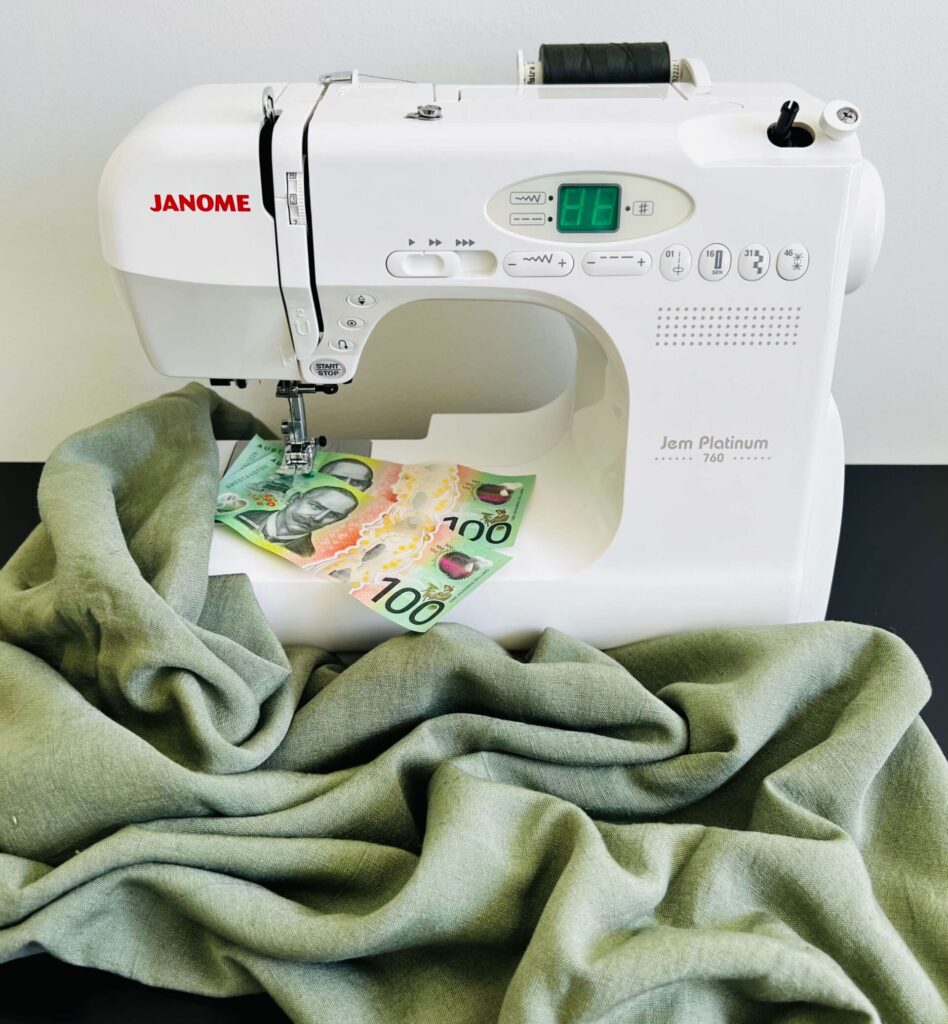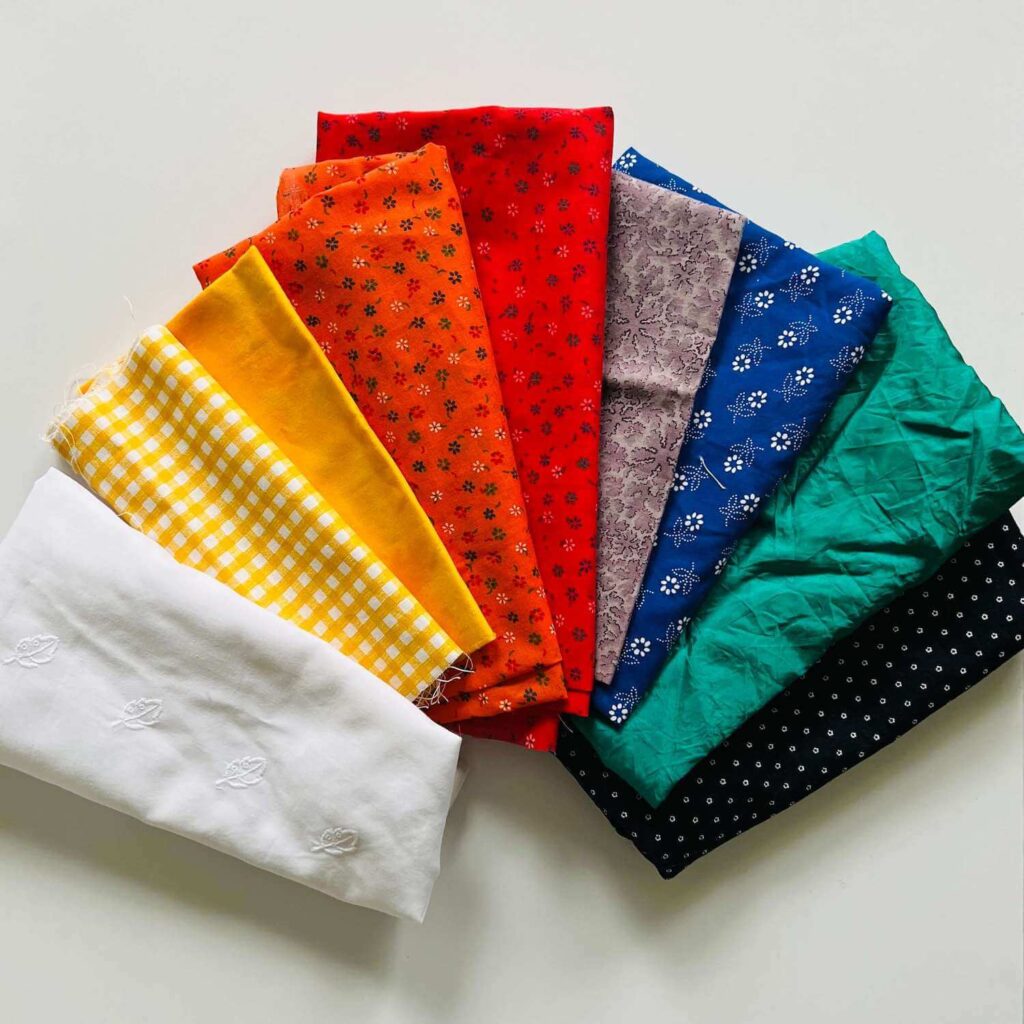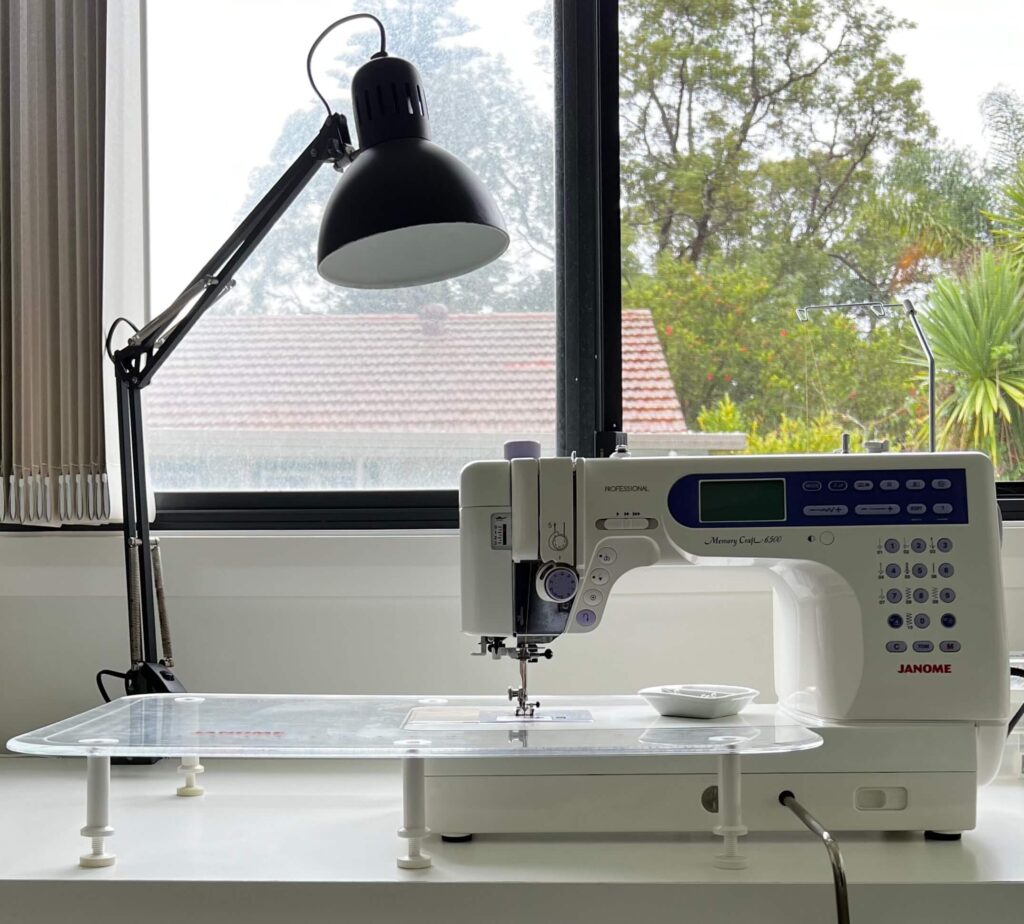Sewing can be cheap and without concern for our planet. Shop your closet first, plan your project based on what you have and look for the stuff you need second hand. Pick one, three or all sustainable practices that work for you:
Visit your wardrobe
Before starting a new garment project check your closet first. How many of your clothes do you actually wear? Can you renew, alter, mend or upcycle clothes you don’t wear? Use old and outgrown clothes for new projects.
If you are going to sew a new piece of clothing, plan how you will be pairing it with your existing clothes.
Shop your stash
Sometimes we forget what we have behind closed doors, inside of a drawer or in a storage bin. Go through your pattern collection, fabric stash and notions to refresh your memory before heading to the shop.
Tip: Jot down ideas, so you can plan your sewing projets better in the future based on what you have!
Op shops
Type of shops that sell second hand clothes and home goods with charitable funds. Different names used in different parts of the world, but basically it’s the same thing:
- Charity shop – UK
- Thrift store – North America
- Op (opportunity) shop – Australia
- Second-hand shop – Russia
I really enjoy treasure hunting, you never know what you going to find. Most op shops have a section with craft related stuff, where you can look for sewing patterns, fabrics, notions, yarn, art and craft materials. Don’t miss a linen section, bed sheets and tablecloths, are great for sewing test garments.
You can also pick up clothes and flip it to the modern piece of clothing or something completely different! The sky is the limit.
Read about what to look for when buying fabric second hand.
Online market
Searching for specific stuff you need is more convenient online. Set up your location with the radius and buy/sell second hand goods in your local area. There are many websites that connect sellers with buyers (Gumtree, Facebook Marketplace, Craigslist), some are specific for certain goods, for instance vintage items.
Reuse notions
Lower your footprint and save money by making a seam ripper your best friend!
Take apart old stuff and reuse their parts. Buttons, elastic, zippers or other hardware will come handy in future projects. You can cut out pieces of undamaged fabric use it for patches or patchwork.
Cutting layout
Usually, the designer includes cutting layout in the pattern instructions. But you don’t have to follow it. Sometimes you can save a lot fabric by rearranging the pattern pieces, cutting on a single layer instead of double layer, or by creating a fold just for a widest part of your pattern piece.
Replacing, blocking and piecing
If you have either too little fabric for the project or too many fabrics scraps hanging around, that’s creative opportunity!
Change up facings, bottom placket or pockets for less visible fabric swap. Yoke, sleeves, collar or cuffs for more visible fabric swap. By colour blocking you’ll add a personality to your designs.
You can patchwork fabric offcuts together to create a size big enough for your pattern piece.
Read more about fabric scraps management and scrap busting ideas.
Sewing patterns
Sewing without a pattern
You can save a lot of paper and time with working only with your own measurement. This technique will also shorten a fitting time.
Copy what you love
Duplicate clothes from your closet you already know that fits and you enjoy. Trace the pattern pieces separately on the paper, add seam allowance and you’ve got yourself a pattern!
You don’t have to stick only to clothes. Same applies to home decor and accessories.
Hack the pattern
Use the patterns you already have in a slightly different way. Change a neckline, swap the sleeves, add buttons, lengthen the skirt… possibilities are endless. This is also a good way how to level up in pattern making.
Free PDF patterns
Search for free download sewing patterns. Sometimes there are no strings attached, other times you’d need to subscribe to newsletter. Try a new company before buying, find your style or just build your sewing skills.
Change the seam allowance
Most of the paper sewing patterns has a 5/8 inch seam allowance. It’s great if you are making a french seam finish. But if you want to use just an overlocker, 3/8 inch is enough.
TIP: Avoid buying fabric with an obvious pattern. Choose solids or busy small pattern so you don’t need to pattern match.
Libraries
Visit your local library, browse pattern books, sewing books and magazines. Did you know that libraries offer audiobooks, electronic books and electronic magazines as well? There are plenty of free resources out there.
Sell or donate what you won’t use
Other ways how you can save money, is selling what you don’t use, and then buy what you need.
I enjoy working with remnants and hunt for treasures at a second hand market, but I understand that It’s not for everyone. In that case sell or donate your remnants and stuff you don’t use to other sewists or organisation, so they can make most of it.
I hope that these tips for frugal and sustainable sewing practices will inspire you to make it your own!
Leave a comment, share your thoughts. Do you have another frugal and sustainable tip for us?




Love it! Great tips on frugal sewing.
Thank you sew much! 😀